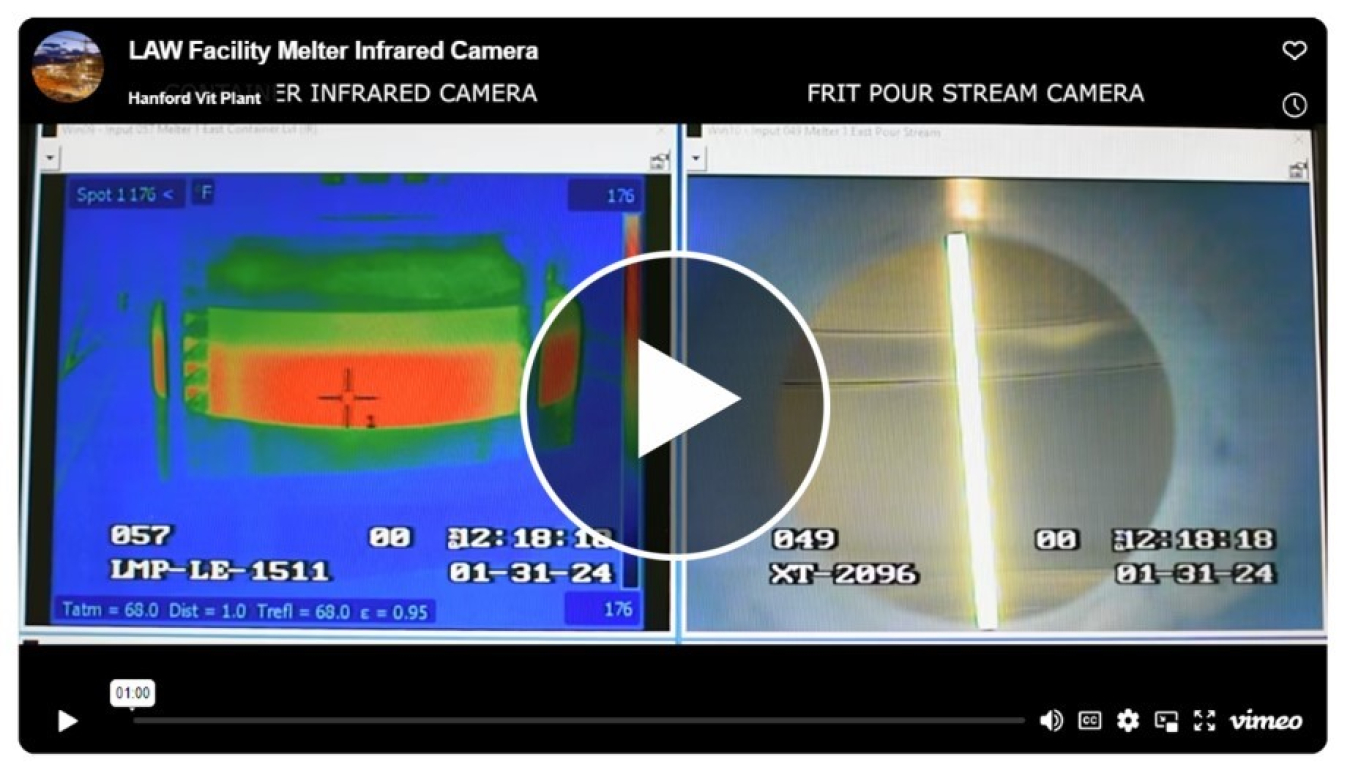Workers at the Hanford Site‘s Waste Treatment and Immobilization Plant (WTP) recently poured test glass into four stainless steel containers inside the plant’s Low-Activity Waste (LAW) Facility. The pours help crews build proficiency for future tank waste treatment operations.
Office of Environmental Management
February 27, 2024
In this video, a camera captures the path of the molten glass as it enters a stainless steel container, right, while an infrared camera shows the rising temperature of the container in real time, left.
RICHLAND, Wash. — Workers at the Hanford Site‘s Waste Treatment and Immobilization Plant (WTP) recently poured test glass into four stainless steel containers inside the plant’s Low-Activity Waste (LAW) Facility. The pours help crews build proficiency for future tank waste treatment operations.
“As the team prepares to heat up Melter 2, our operations team conducts continual proficiency test pours,” said Mat Irwin, acting assistant manager for WTP. “We speak to the importance of the people, plant and paper all being prepared as we near cold commissioning, and each of these pours is another step toward safe and sustained operations.”
Last summer, WTP staff heated up the first of two melters to 2,100 degrees Fahrenheit and began filling the melter with glass beads, called frit. The frit melts and forms a molten test glass that is poured into containers. The test glass is “clean,” as it does not include any chemicals or radiological waste.
That process, called cold commissioning, will also be completed with Melter 2, allowing workers to operate the plant and immobilize the simulated waste in glass without the hazards of real waste.
EM contractor Bechtel National Inc. is designing, constructing and commissioning the plant for Hanford. When complete, the plant will stabilize millions of gallons of pretreated tank waste using a process known as vitrification, during which the waste will be mixed with glass-forming materials in the 300-ton melters, poured into the containers and transferred to Hanford’s Integrated Disposal Facility for safe disposal.
Bechtel anticipates heating up the second melter in the coming weeks. Information on the melter heatup process can be found at Journey to Melter Heatup. The plant facilities can be viewed using the self-guided Hanford Virtual Tour.
-Contributor: Tyler Oates
To receive the latest news and updates about the Office of Environment Management, submit your e-mail address.

